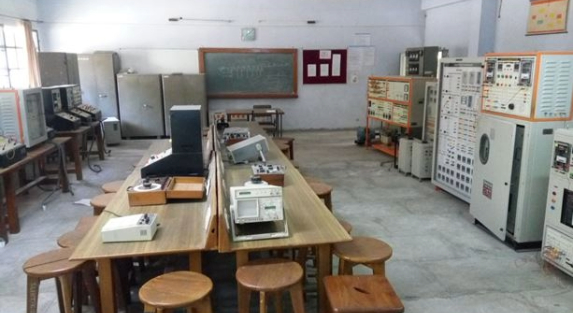Selecting the right lab measurement instruments is not just about ticking off boxes—it's about ensuring precision, reliability, and efficiency in your scientific endeavors. Whether you're establishing a new lab or upgrading your existing tools, the process can be overwhelming. Let’s walk through some practical, human-centered tips to guide you in making the best decision tailored to your needs.
Understanding Your Laboratory Requirements
Before browsing catalogs or speaking to vendors, take a step back and look closely at your laboratory’s unique requirements. Ask yourself: What exactly do we need to measure? Are we focusing on qualitative analysis, or do we need precise quantitative results? Are our samples liquid, solid, gaseous, or biological in nature?
Understanding your sample types, the necessary level of precision, and the overall volume of work will help you determine whether you need basic tools or advanced, high-throughput instruments. For example, a research lab handling biological specimens might require spectrophotometers with advanced features, while a quality control lab might need high-accuracy weighing balances.
Also, consider workflow. If you’re working with a high volume of samples, you'll need instruments that can handle repetitive tasks efficiently. Don’t overlook user experience—sometimes, the best choice is the one that makes life easier for your team.
Key Factors in Selecting Lab Measurement Instruments
When choosing lab measurement instruments, think beyond price tags. Start with accuracy and precision—these define the core performance of any measuring device. Precision ensures repeatable results, while accuracy brings you closer to the true values.
Next, assess the measurement range and resolution. Ensure the instruments can operate within your needed limits without compromising on detail. You also need to think about the environmental conditions of your lab. Is it temperature-controlled? Are there humidity or chemical exposure concerns? Instruments should withstand such elements without losing functionality.
User-friendliness is equally crucial. Choose tools that offer intuitive interfaces and readable displays. Consider how easily the equipment can be calibrated and maintained. Instruments requiring frequent, complex calibrations may not be practical in a busy setting. These factors collectively ensure reliability and ease in daily lab life.
Evaluating Manufacturer and Support Services
Just as you wouldn't buy a car without researching the brand, don’t overlook the manufacturer of your lab instruments. A reliable vendor with a solid reputation can save you countless headaches down the road. Look for companies with a proven history in the field and who offer warranties and technical support.
Customization is another aspect to weigh in. No two labs are identical. Your lab might have unique layout constraints or specialized needs that off-the-shelf products can’t satisfy. Choose a manufacturer who’s willing to adapt and work with your specifications.
Lastly, assess the quality of after-sales service. Problems may arise, and when they do, responsive customer service becomes invaluable. You need to feel assured that if something goes wrong, help is just a phone call or email away. Building a strong relationship with your vendor can lead to long-term benefits, including smoother maintenance, software updates, and better pricing on future purchases.
Budget Considerations
Budget is often the elephant in the room, but it doesn’t have to derail your decisions. Think long-term. A cheaper instrument might save money today but could incur higher costs down the line in repairs, replacements, or inaccurate results.
Start by defining a clear budget but keep a cushion for upgrades or unexpected costs. Weigh the total cost of ownership (TCO), which includes the purchase price, calibration, maintenance, training, and potential downtimes. Sometimes paying more upfront offers better value over time.
It’s also wise to involve your finance and operations teams early in the selection process. They can provide insights into ROI and help you choose between leasing, renting, or buying. Don’t forget to ask vendors about payment plans or bundled offers. An informed financial strategy ensures you get the best value without compromising quality.
Ensuring Compliance and Quality Standards
In scientific environments, compliance isn't optional—it’s critical. Regulatory bodies often require labs to follow specific guidelines and maintain calibration records. Choosing lab measurement instruments that adhere to ISO/IEC 17025 standards ensures you’re working with tools recognized for their reliability and accuracy.
Reliable calibration is vital for reproducible results. Whether your lab is involved in pharmaceuticals, environmental testing, or academic research, maintaining traceability in measurements supports scientific integrity. Don’t forget the software side—choose instruments with secure, auditable data storage features to help with internal reviews and external audits.
You should also factor in ease of compliance. Instruments that seamlessly integrate with your data management systems reduce human error and boost productivity. In short, the right tools don’t just help you comply—they make compliance easier and more dependable.
Conclusion
Selecting lab measurement instruments might seem technical, but at its heart, it’s a deeply human decision. You're choosing tools that your team will rely on every day. These instruments become extensions of your lab’s identity—helping you chase discoveries, confirm theories, and ensure quality.
By thoughtfully assessing your needs, weighing technical specifications, choosing reliable manufacturers, budgeting smartly, and ensuring compliance, you empower your lab to do its best work. Trust the process, stay curious, and choose instruments that not only measure but also elevate your scientific journey.







 (2).png)
.png)


 (1).png)
.png)